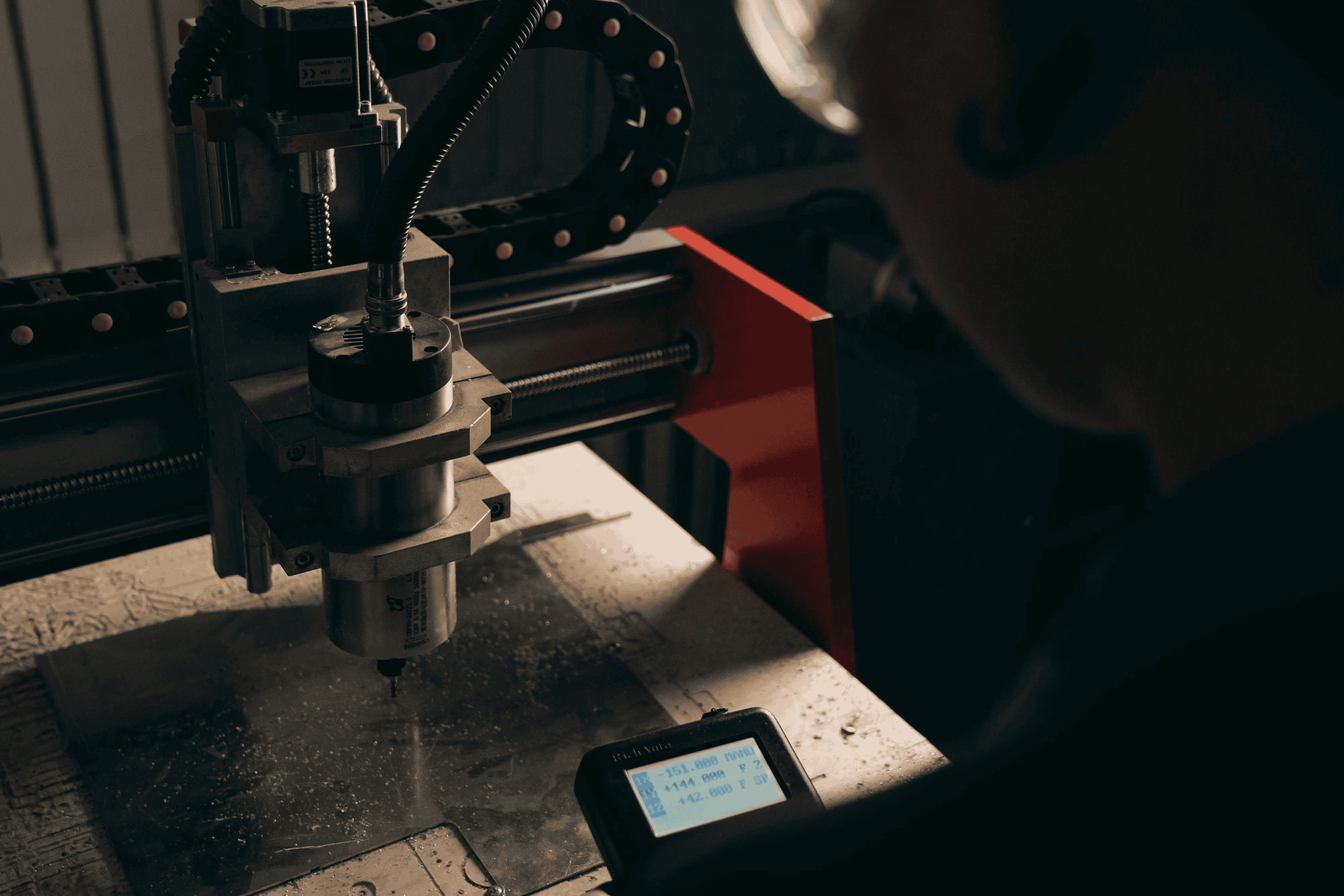Custom Fabrication

Welding certification is a formal performance qualification that proves a welder can deposit sound metal under defined conditions. A cert is always tied to specifics. Process, position, base metal, filler, code, and thickness range. That means a plate test in a vertical groove with E7018 covers a limited envelope, not every scenario on a job.
A proper test follows a Welding Procedure Specification and is witnessed by a qualified inspector or testing facility. After welding, coupons are evaluated with visual inspection and mechanical testing to check fusion, penetration, reinforcement, and internal soundness. The resulting Welder Performance Qualification is the record employers use to assign work within those limits.
SMAW welding certification test plate prep with stringer beads laid for welding certification under AWS code
Most structural steel work follows AWS D1.1. Aerospace often uses AWS D17.1. Pipe commonly uses ASME Section IX. Each code outlines test joints, acceptance criteria, and ranges of qualification. Positions define difficulty and coverage. Flat, horizontal, vertical, and overhead for plate are labeled 1G, 2G, 3G, and 4G. Fillet positions are 1F through 4F. Pipe adds fixed position tests like 5G and 6G, with 6G widely respected for its all around difficulty and coverage.
Visual inspection checks bead shape, arc strikes, undercut, overlap, and profile. Mechanical tests prove internal quality. Common methods include bend tests, fillet break or nick break, macroetch, and sometimes radiography or ultrasonic for pipe. The inspector records essential variables and results on a signed qualification record with continuity requirements.
SMAW certification, often called stick, is popular for structural steel and field work thanks to simple equipment and rugged electrodes. A typical structural plate test uses E7018 in 3G vertical and 4G overhead groove joints on carbon steel. Pipe tests might use a root with E6010 and fill or cap with E7018. The WPS will set electrode class, diameter, polarity, amperage range, preheat, interpass temperature, travel speed, and joint details.
Your smaw certification is defined by what you actually welded on the test. Change the process, position, metal group, or thickness beyond allowed ranges and you need another test. For multi process work, each process must be qualified. That is why many welders hold multiple credentials. A structural 3G and 4G, a pipe 6G, and sometimes a separate stainless or aluminum ticket under the relevant code.
Master electrode control. Run stringers on vertical with slight weave only as allowed by code and WPS. Keep a steady arc length with E7018 and maintain rod angle to avoid undercut at the toes. Clean between passes and monitor interpass temperature. For pipe, practice tie ins and feathered stops. Every bead should support the next without trapping slag.
A certification proves a welder can repeat a process under control. Real projects add complexity. Fit up, access, heat input, and inspection plans change how you approach a joint. A certified shop builds that context into design and execution. That includes selecting the right joint, documenting the procedure, and proving performance before production.
For clients who need structurally sound parts, brackets, racks, or frames, work executed by certified welders reduces risk and speeds approval. Documentation matters. Procedure control, traceable filler, continuity logs, and inspection reports help you pass quality checks and keep schedules on track.
When projects require brackets for heavy loads, gusseted frames, or vehicle integrators that see vibration and weather, SMAW is often the field friendly choice. A smaw welding certification on the right code and position ensures beads hold up beyond a test booth. For shop fabrication, SMAW can pair with GTAW, GMAW, or FCAW to optimize quality and throughput while staying inside qualified ranges.
If you are evaluating partners, ask for current performance qualifications, the code scope, positions held, and continuity records. Request sample WPS and PQR when a project needs procedure qualification. Review inspection methods planned for your parts. Visual, bend, or NDT where appropriate. You want a team that treats certification as a floor, not a ceiling.
At OZK Customs, our fabrication work is built by certified welders and backed by documented procedures that match the job. For design to install, we plan the joint, select the process, and execute to spec with traceable records. Explore our custom fabrication capabilities to see how we approach complex metalwork with a quality plan from day one. If you want a deeper look at our shop disciplines and test scope, review our fabrication services. Curious how we treat clients and projects from kickoff to delivery. Here is why choose OZK Customs.
Bring us your load case, environment, and timeline. We will translate that into a weldable design, a practical inspection plan, and a production schedule that respects both the code and the clock. Tell us where the part lives, how it is used, and what must never fail. We will build to that, test to that, and stand behind it.
Ready for work built by certified welders who follow code and document every step. Tell us about your project and we will plan the right process, materials, and inspection path to deliver shop-quality results on a field-ready timeline.
ADDRESS:
6159 E Huntsville Rd, Fayetteville, AR 72701
PHONE:
(479) 326-9200
EMAIL:
info@ozkvans.com